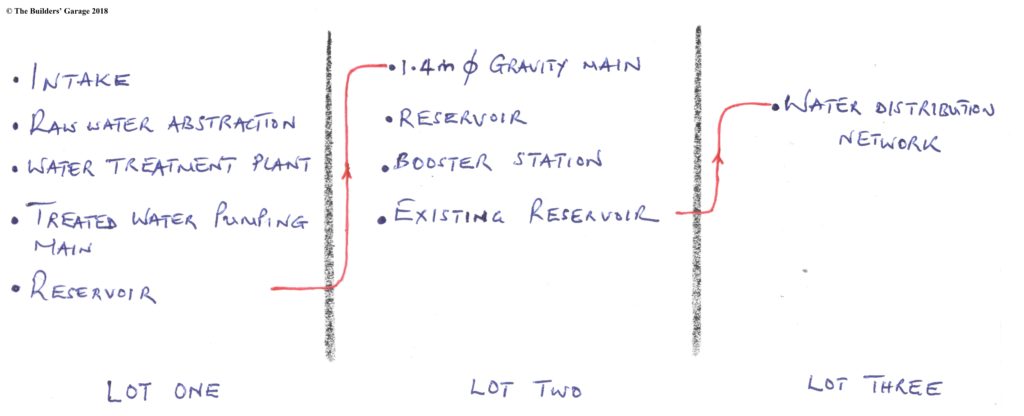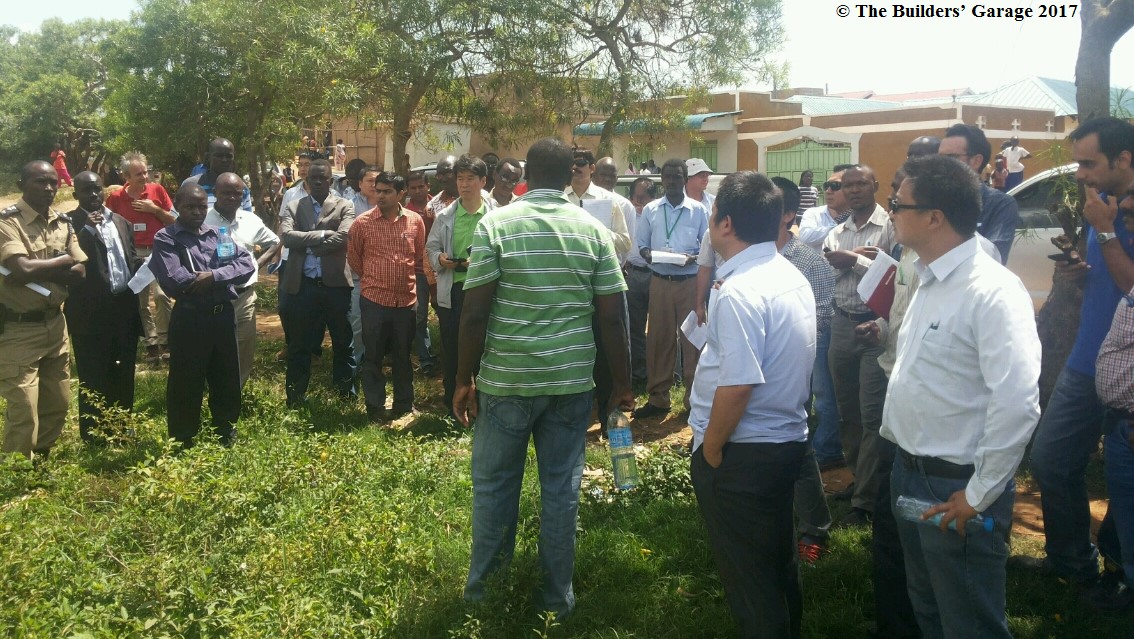The contractors’ pre-bid meeting
In June and July 2016, The Builders’ Garage published a two-part article entitled The Contractor’s Technical Proposal. In this article, I shared my personal experience preparing a technical proposal for a large infrastructure project. I also highlighted that prior to the preparation of a detailed technical proposal, contractors are advised to nominate a team of competent people to attend a pre-bid meeting.
It is at one of these pre-bid meetings that I met McDonald, about a year ago. He had been recruited by an agency to improve the design of one of its new water treatment plants, which was in the initial stages of construction.
In this article, McDonald shares his experience preparing for, and conducting a pre-bid meeting for an infrastructure project valued at approximately £100m.
Cyrus: McDonald, you must have spent a lot of time designing water treatment plants!
McDonald: Yes, I have designed many water treatment plants around the world. I have also assisted a number of contractors prepare detailed technical proposals, which have enabled them submit competitive bids.
Cyrus: To what extent have you been involved in the preparation of a technical proposal?
McDonald: I was once part of a design team that was required to assist our client conduct a successful pre-bid meeting for the construction of a backbone water supply system somewhere in Sub-Saharan Africa. The entire scope of work comprised three lots.
Lot one comprised a water intake, with its raw water abstraction main, a water treatment plant and a treated water-pumping main to a reservoir.
Lot two comprised a 1400 mm diameter pipeline conveying water from the reservoir (located at the termination point of lot one) by gravity to a 30,000m3 reservoir, from which the water would continue its journey by gravity to an existing reservoir via a booster pumping station.
Lot three comprised the water distribution network, fed by the existing reservoir at the termination point of Lot two.

We, the design consultants had completed the detailed design and tender documentation process for all three lots and a pre-bid meeting was being organised for lot two. Prior to the announcement of the construction works tender, the client pondered the option of pre-qualifying contractors to quicken the selection process for suitable contractors. After a careful consideration of all the pros and cons associated with pre-qualification, a call for expression of interest was announced instead.
Twenty-five firms expressed interest in executing the construction works for lot two. The shortlisting process lasted approximately six weeks, and four contractors made it to the shortlist. Three out of the four companies were single entities whereas the fourth was a consortium of two companies.
The shortlisted contractors were issued tender documents and the entire bidding process was scheduled to last 12 weeks. In the tender documents, the client indicated that a pre-bid meeting was to be held approximately two weeks after the date of issuance of the tender documents.
The preparatory stages
As the date for the pre-bid meeting approached, I reviewed the tender documents, visited the proposed construction sites and prepared responses to various requests for clarification that the client had received from the bidders.
In addition, the client assigned an officer to assist me draft an appropriate programme for the pre-bid meeting, and make all the necessary logistical preparations, which comprised organising an appropriate venue for the detailed question and answer session, and ensuring that we had a feasible traffic management plan in place.
Cyrus: Did you say traffic management plan and logistical preparations?
McDonald: Yes.
The proposed construction sites were sparsely located within the outskirts of the capital. Navigating all of them without a well-coordinated traffic management plan was bound to be a disaster.
Regarding logistical arrangements, the programme was to commence with a brief presentation of the scope of work envisaged in lot two, remarks from the client’s project director, followed by a question and answer session, a tea break, and later on a physical tour of the sites.
Cyrus: It appears this was not the first time you were coordinating a pre-bid meeting!
McDonald: You are right. This was going to be one of many I had previously organised and successfully conducted. However, every project has its own cocktail of surprises and lessons to learn so I was not going to take any chances.
Every project has its own cocktail of surprises and lessons to learn so I was not going to take any chances
The meeting
When the day of the pre-bid meeting finally came and all the bidders and their representatives had arrived, we commenced the meeting with formal introduction of all the individuals present.
The client’s director made some opening remarks largely related to competitively priced bids and good quality of work, and the fact that all bidders were required to demonstrate their competence to be considered for contract award.
Thereafter, a member of my team made a brief power point presentation of the scope of work envisaged, break tea followed and we later on drove off to the construction sites along a route that we had planned.
Cyrus: What was the general mood at this start up meeting?
McDonald: All representatives of the four shortlisted bidders attended and they seemed very excited.
At the key installations (see Figure 1) , the bidders asked a number of questions related to the availability of services i.e. water and electricity, and the exact location of the plot boundaries for the sites. The client and the consultant provided the responses to their questions.

Figure 1: Bidders asking questions at one of the sites
Fortunately, we did not get lost during the tour of the sites. After about three hours of the physical site tour, we returned to the venue where the day’s programme had commenced and the bidders asked more questions. Some of them were;
- What is the nature of the bidding process? Is it open international bidding?
- Will the client assist the contractor’s technical experts to process work permits and visas?
- Can you provide us a copy of the geotechnical report for the key installation sites, and possibly for the pipeline route?
- We are aware of the requirement to carry out pressure testing of the water pipelines once they have been laid in the ground. Shall the client provide water for these tests or will the contractor have to purchase it?
- Is the use of specialized contractors mandatory?
- Will the client provide sufficient way-leave for the contractor during the excavation and installation of the pipeline?
- Are the costs for temporary access to the construction sites to be included in the Contractor’s rates?
- Are all the sites free of encumbrances?
- After we have submitted our bids to the client, will the financing agency be involved in the evaluation process leading to the award of the contract to execute the works?
- Are you willing to extend the submission deadline?
- Is this a turnkey contract?
- Can we quote in foreign currency?
- Have all environmental clearances for the project been secured and if not, what will be the role of the contractor in this regard?
We provided verbal responses to the questions that were asked. We also prepared minutes of the day’s proceedings and sent them to all the bidders by email.
Cyrus: From your experience, what are the key things to look out for prior to and after conducting such an exercise?
McDonald: You should take note of the following
-
Adequate preparation is extremely important – Requests for clarification from bidders are usually expected. You are advised to have a comprehensive understanding of your project. Once the bidders receive good feedback to their requests for clarification and they determine that the scope of work is clearly defined, you are likely to receive very competitive bids.
On the other hand, if the scope of work is not clearly defined, the resulting bid prices will be inconsistent with your expectations, because the bidders will most likely factor in the risk (uncertainty) which they associate with your project. In certain cases, some bidders will not submit a bid at all.
-
Make an effort to prepare and issue tender documents that have been well prepared – In this case, I could sense this from the type of questions the bidders asked, that the tender documents had not been well prepared. There were too many ambiguities and a number of inconsistencies. Arising out of this, we were obliged to issue a fresh set of tender documents to improve on the clarity of the scope of work.
-
The first impression matters – I once conducted a pre-bid meeting where a contractor challenged our design. Not only was I embarrassed, but I also felt like I had let the client down. During the question and answer session, I could not respond to their questions but I promised to provide a comprehensive response in the minutes of the pre-bid meeting.
I did not participate in the selection process for the contractor but later on, I was informed that the bidder who had challenged our design went on to prepare a very good technical proposal and was awarded the contract. I think the company made a good impression.
On the other hand, there are some bidders who ask certain questions, which immediately make you doubt the competence of the individual asking the question or the company being represented.
-
Scanning the competition and forming alliances – If you are a contractor, the pre-bid meeting can turn out to be a good place for you to assess your competition. The meeting also presents you with an opportunity to meet a potential business partner or associate. In many cases, suppliers of inputs (materials) usually attend such meetings because it presents them with an opportunity to sell products, which will be an input to the final product of the construction works.
-
The minutes of the pre-bid meeting – Once the pre-bid meeting has been concluded, it is important to send out the minutes of the proceedings to all bidders. These minutes contain the client’s responses to the clarification sought by the bidders. They assist the bidders (who were in attendance as well as those who did not attend) understand the scope of work as well as the necessary requirements which need to be fulfilled in order to be considered for contract award.
Prior to signature of the construction contract, try to ensure that a copy of the minutes of the pre-bid meeting is annexed to the contract. Sometimes these minutes contain information, which enables the contractors price their scope of work. In case a contractor claims to be unaware of certain issues, which were brought up at the tender stage (prior to contract award), the minutes usually come in handy during implementation of the project.
Cyrus: Thank You, McDonald
McDonald: You are welcome. Cyrus, before you go, beware that pre-bid meetings are also held for consultancy services and supply of goods. I have been fortunate to witness each of these scenarios and I am willing to share with you another set of lessons at an appropriate time.
Cyrus: Thank you once again.
© The Builders’ Garage 2018. Permission to use this article or quotations from it is granted subject to appropriate credit being given to thebuildersgarage.com as the source.



4 Comments
That’s interesting. I have learned something from this.
Good Read
Gr8 article
Great article. Thank you Cyrus.